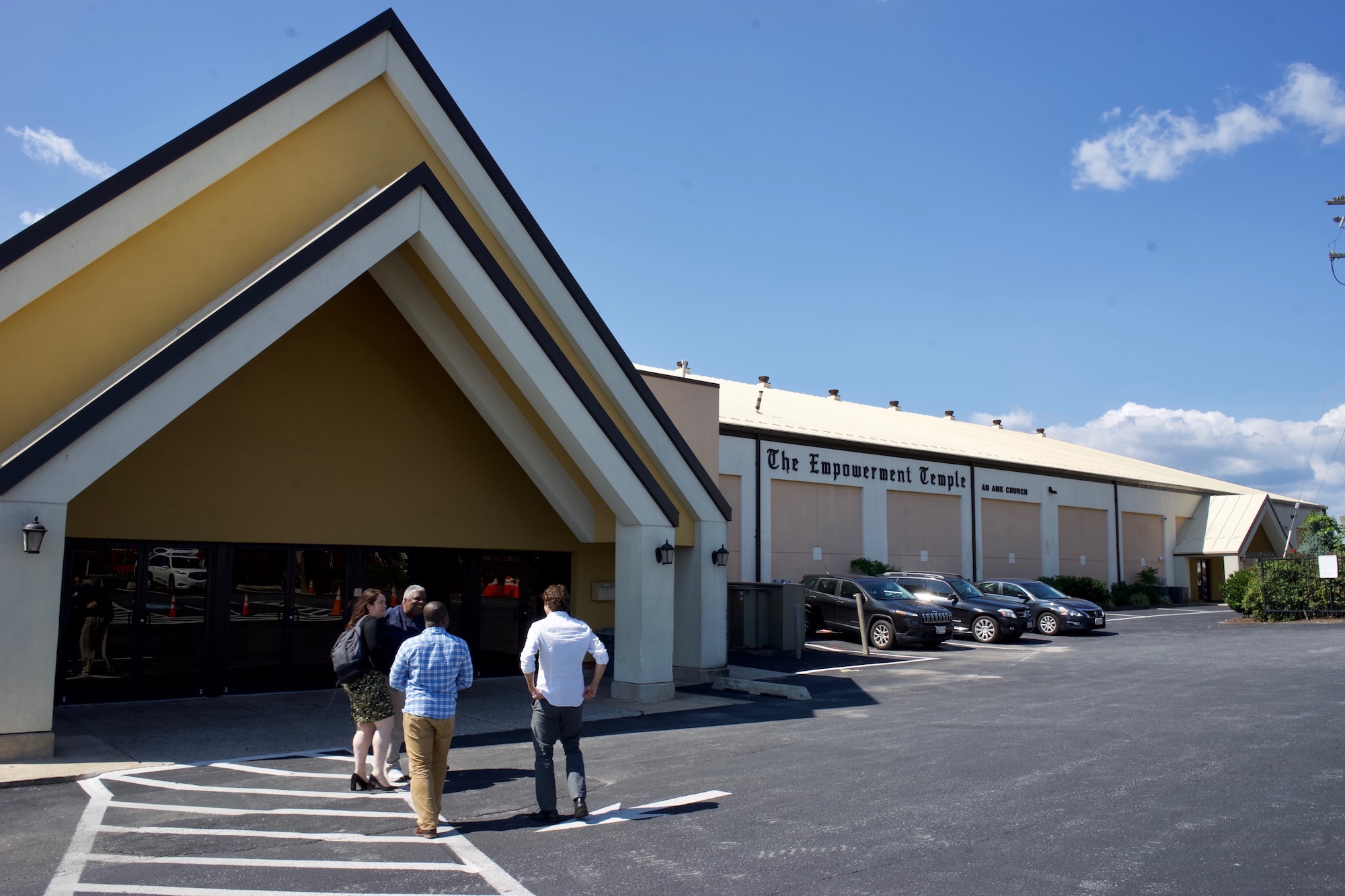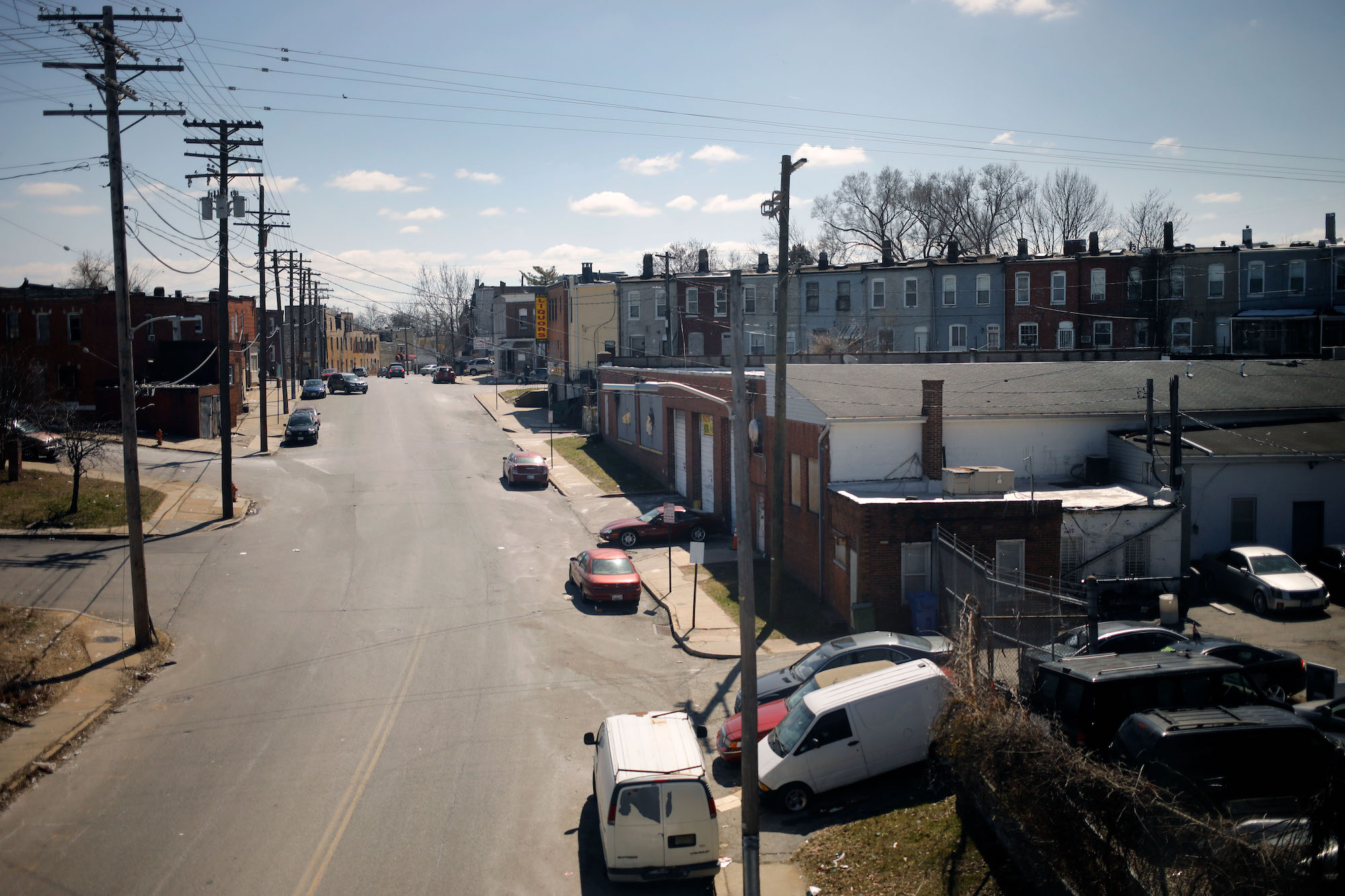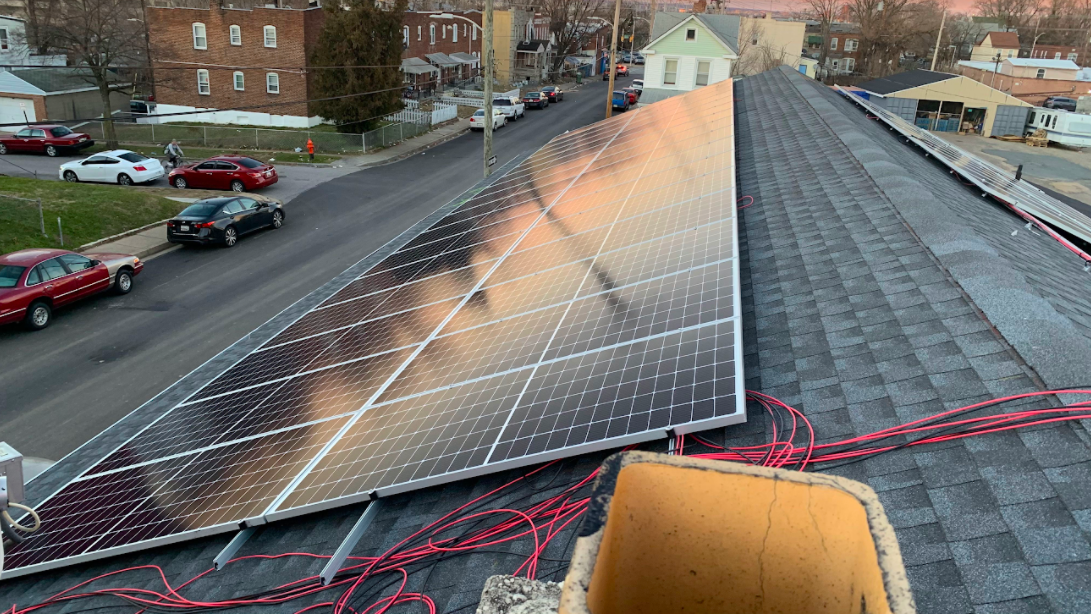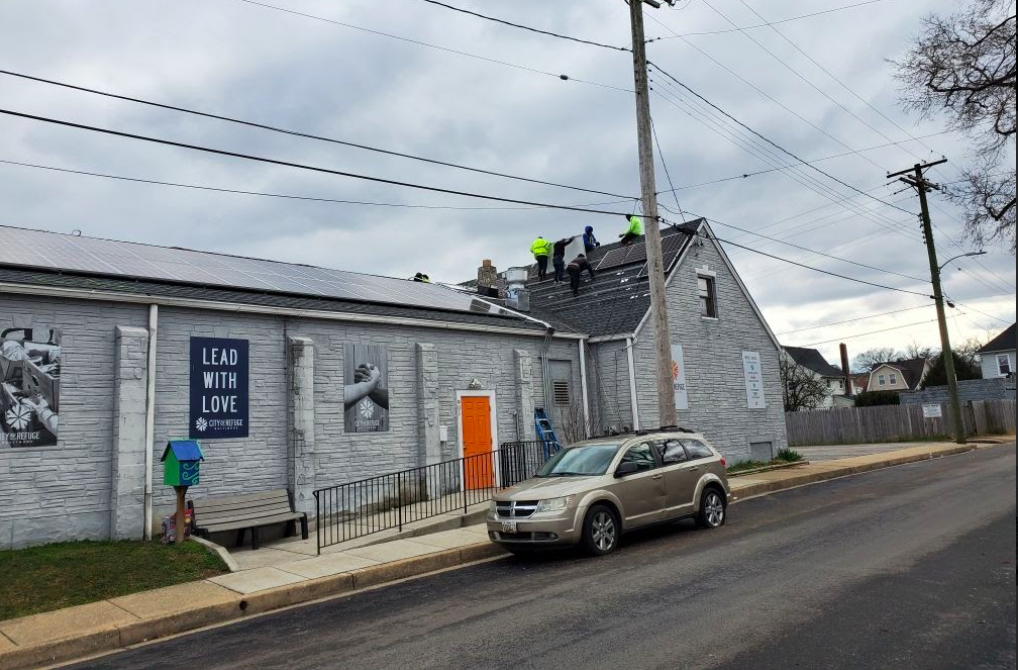
Baltimore is hooking up a Black megachurch with some critical solar battery electrical power
Empowerment Temple, a predominantly Black megachurch in Baltimore’s Park Heights place, is a area neighbors can normally go for free of charge foods, school provides, and generate-through COVID-19 assessments. Quickly, they’ll also be capable to visit the lengthy, beige setting up to cost mobile phones, refrigerate medications, and cool off (or heat up) throughout the up coming electricity outage.
City and point out businesses are supplying hundreds of thousands of dollars to equip the Maryland church and other amenities with photo voltaic panels and battery storage techniques — making “resiliency hubs” that provide vulnerable communities adhering to extraordinary climate activities or grid failures.
“A hallmark of our ministry is, ‘How can we assistance people in distressed cases?’” mentioned Anthony Robinson, a church member and leader of the nonprofit Economic Empowerment Coalition, which is assisting put into action the clear vitality undertaking. “We see this as an prospect to be of assistance to the broader local community.”
Development is established to start off this month on a 120-kilowatt rooftop solar array, which will offer electric power to banking companies of batteries at the church. Really should tornadoes and flash floods knock down the grid — as they did this month in Ida’s wake — the constructing will become a pocket of power in the community, which is largely reduced-cash flow. Like other Baltimore resiliency hubs, Empowerment Temple will be equipped to also use the methods to assistance decreased their very own energy expenditures by promoting excess solar power to the utility corporation and drawing from the batteries when grid electrical power is high-priced.
The church’s battery will have a capability of just about 500 kilowatt-several hours, which is a evaluate of how substantially strength the process can store or discharge in an hour. (The typical home in Maryland works by using about 975 kilowatt-hours for every month, in accordance to 2019 facts.) In follow, that battery capacity signifies Empowerment Temple can financial institution 3 days’ worthy of of backup electric power to keep lights and appliances operating in a selected frequent place.
“Low- to reasonable-profits communities are generally the areas where, when disasters strike, they have the least amount of sources,” reported Lenwood Coleman, main system officer at Groundswell, a nonprofit photo voltaic developer working with the City of Baltimore to strategy and design and style the hubs. The companions are identifying up to 30 much more websites that could host photo voltaic-furthermore-storage units, along with solar installer Suncatch Strength and technologies service provider A.F. Mensah.
The initiative “allows us to appear at church buildings and faculties as a place the place men and women can comfortably appear all through brownouts or blackouts to get guidance they would not normally get,” Coleman reported.

Baltimore’s resiliency hubs are rolling out as photo voltaic-additionally-storage will take off close to the nation. In latest several years, the U.S. energy storage market has found a far more than 20-fold soar in annual development, from 161 megawatt-several hours of overall new storage ability in 2015 to an more 3,700 megawatt-hrs in 2020, in accordance to the power exploration and consultancy agency Wooden Mackenzie. That features utility-scale installations that soak up wind and solar electrical power, as well as smaller systems in hospitals, industrial amenities, and single-family homes.
Residential storage by yourself — which in most situations signifies batteries paired with photo voltaic panels — is envisioned to see new task capacity virtually double in 2021 in comparison to final year’s overall, explained Chloe Holden, a Wood Mackenzie analyst. Slipping prices and expanding battery selections are driving additional individuals to install the know-how. But Holden mentioned “the key providing point” for battery storage is backup electricity. Without a battery program, most photo voltaic arrays will automatically shut off in the celebration of a grid-pushed ability outage. Significant grid outages are getting additional recurrent and more time-lasting as the nation’s aging infrastructure buckles beneath the barrage of climate-fueled weather conditions occasions, an investigation by Climate Central discovered.
In the scenario of rooftop photo voltaic methods and electric powered cars, condition and federal aid plans have traditionally favored the “early adopters” with money or garage house to make investments in rising systems. Neighborhood teams and policymakers in Maryland, California, Illinois, and other states are doing work to make certain that lower-cash flow inhabitants are incorporated from the start in power storage systems.
“We need to have to make certain that the [storage] current market develops in an equitable way as it expands,” mentioned Michelle Moore, CEO of Groundswell. “That it is not just resilience for all those who can find the money for it.”

Courtesy of Suncatch Strength
Electrical power outages are popular in Maryland, where severe heat waves, serious flooding, and large winds on a regular basis batter the grid. In Louisiana, outages brought about by Hurricane Ida in late August are anticipated to persist for months. Before this calendar year, additional than 4 million customers in Texas shed electricity all through a deadly winter season storm.
“What people today are now going through is a massive disruption all the time, and it is all throughout the region,” explained Vikram Aggarwal, CEO of EnergySage, an on the internet market for solar arrays and storage programs. He reported the website’s targeted traffic from Texas spiked in late February adhering to the winter season outages, and that a better percentage of consumers are searching for batteries today than they did right before the storm.
In drought-stricken California, utilities have began to preemptively slice off electric power to reduce electrical equipment from sparking fires on warm, windy times. Previous year, California’s utility regulator licensed funding of additional than $1 billion by means of 2024 for the state’s Self-Technology Incentive Plan. Regarded as SGIP, the program provides upfront rebates for installing power storage devices. It’s also largely why the Golden Point out has extra than 80 % of the nation’s modest-scale storage capacity.
Don Younger, a property owner in Northern California’s Marin County, stated a just about four-working day-lengthy power shutoff in 2019 prompted him to take into consideration solar-furthermore-storage. His 4.8-kilowatt SunPower process can preserve his lights and appliances operating throughout transient energy outages, of which he’s expert two considering the fact that setting up the array in March. Youthful acquired a $2,000 rebate for the technique, which cost north of $32,000. He reported he expects to get well that sum in 7 yrs by offering solar electricity and preserving on utility bills.
Continue to, for numerous people, this sort of a cost tag remains prohibitively high-priced. More substantial units, including those put in in Baltimore, can cost numerous hundred thousand bucks to build and maintain. To that conclusion, California presents “equity resiliency” SGIP rebates that can virtually, if not wholly, include the value of battery storage devices of residences or vital services. In Oregon, policymakers not long ago allotted $10 million to develop the state’s Photo voltaic + Storage Rebate system, which allows low- to average-money shoppers to get up to 60 % of the expense of a storage process other customers can get up to 40 p.c.
“Low-earnings individuals do not have the added cash flow to even finance a solar panel, so we are not able to be expecting them to finance storage,” explained Olivia Nedd, the plan director of Vote Photo voltaic’s entry and equity software. She said state electrical power storage policies must contain “carve-outs” — ensures that disadvantaged communities obtain a specific proportion of funds or overall installations — and ought to devote in consumer outreach and demonstration tasks so that individuals in minimal-income neighborhoods discover how to accessibility these possibilities. Devoid of deliberate measures, Nedd explained, solar-plus-storage applications are bound to bypass the persons who might benefit most from acquiring crisis electric power. That involves the medically vulnerable and these who just cannot go away town when the grid goes dark for prolonged periods.
Not all photo voltaic equity systems concentrate on recruiting people today. Some states have sought to extend participation via “community electricity storage.” This typically refers to utility-owned projects that are created to retain the lights on in regions that practical experience recurrent service interruptions, particularly during extraordinary climate functions.
In Illinois, the utility ComEd released a single of the country’s to start with CES pilot projects in 2017 in the village of Beecher. The firm installed a 25-kilowatt-hour lithium-ion battery, which is more than enough to offer about an hour of backup power to a few collaborating residences, close to present grid machines. David O’Dowd, a ComEd spokesperson, reported the Beecher technique stays in operation and that the utility is developing a handful of electricity storage tasks throughout the point out. In Chicago’s South Aspect area, ComEd has two pilots underway to make electricity a lot more trusted in the Bronzeville district. One particular of the new battery devices will join to a 3,000-panel rooftop solar array sprawled across Dearborn Properties, a 16-building general public housing enhancement.
Though group vitality storage aims to continue to keep grid infrastructure operating efficiently, neighborhood-led initiatives like Baltimore’s resiliency hubs are intended to sustain electric power inside of susceptible neighborhoods when the opposite transpires.
Across city from Empowerment Temple, an additional hub is previously operating its photo voltaic-moreover-storage system. Town of Refuge, a nonprofit organization, finished a 110-kilowatt photo voltaic array and 430-kilowatt-hour battery system previously this summer at its youth heart in South Baltimore’s Brooklyn community. The know-how recently saved the center’s fridges humming and lovers whirring all through a electrical power outage brought on by thunderstorms. But the biggest effect so considerably has been the utility invoice cost savings, reported Billy Humphrey, City of Refuge’s founder and CEO.

He believed that about the last few months, the firm has saved between 30 to 50 % in electrical energy expenditures — cash that can now go toward community company. Just before the pandemic, City of Refuge served about 250 organized foods a week in Brooklyn, which is deemed a “food stuff desert” for its absence of very affordable, healthful foodstuff. Currently, the firm is serving some 2,000 foods weekly, mostly to households grappling with unemployment.
“Certainly the pandemic has assisted us take a look at our motto of a resiliency hub,” Humphrey mentioned.
And nevertheless, even with this sort of financial savings and the declining charge of batteries, the upfront price of power storage can still be sufficient to retain very similar initiatives from shifting ahead, at least without further funding. Companions in the Baltimore resiliency hub initiative say they’re hoping the federal federal government will provide significantly-essential assist for the city’s subsequent spherical of resiliency hubs, primarily through the $1 trillion infrastructure bill now floating in Congress.
The goal is to evenly distribute the up coming 30 solar-moreover-storage devices through Baltimore so that no one has to travel much too much to uncover reduction, said Brad Boston, founder and president of Suncatch Power. The solar set up company is assisting survey probable new assignments, and it presents palms-on work education to individuals having difficulties to come across perform. Suncatch educated two persons just about every on the Town of Refuge undertaking and yet another site in Southwest Baltimore.
Boston mirrored on how resiliency hubs may provide other extreme climate-susceptible metropolitan areas like New Orleans, where quite a few of his household members are living. Despite the fact that he acknowledges the technology can not halt storms like Hurricane Ida outright, he says supplying ability is an essential step to assist locals get better far more swiftly. “There could’ve been a ton far more spots to go for folks who couldn’t depart,” Boston reported. “We’ve got to do almost everything we can do, everywhere you go.”
